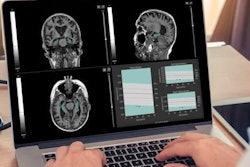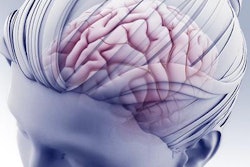
MRI scans have confirmed reduced blood flow in key regions of the brain associated with memory and early dementia in older people whose hearts pump less blood, according to a study published online November 8 in Neurology.
The findings from researchers at Vanderbilt University Medical Center suggest that the suboptimal blood flow in the brain's temporal lobe regions caused by poor heart function could be significant, as this is where Alzheimer's disease is known to develop first (Neurology, November 8, 2017).
"Our findings show that when the heart does not pump blood as effectively, it may lead to reduced blood flow in the right and left temporal lobes that process memories," said lead author Angela Jefferson, PhD, director of the Vanderbilt Memory and Alzheimer's Center. "What is surprising is the reduction we observed is comparable to brain blood flow in someone 15 to 20 years older."
Disproportionate dependence
While the brain accounts for only 2% of a person's body weight, it receives approximately 12% of blood flow from a normally functioning heart. The heart-to-brain conduit is critical because when older adults' hearts do not perform at an adequate level, the reduced blood flow is known to affect cognitive performance, lead to smaller brain volume, and potentially induce dementia and Alzheimer's disease.
"We currently know how to prevent and medically manage many forms of heart disease, but we do not yet know how to prevent or treat Alzheimer's disease," Jefferson said. "This research is especially important because it may help us leverage our knowledge about managing heart health to address and treat risk factors for memory loss in older adults before cognitive symptoms develop."
The study included 314 subjects with an average age of 73 years (± 7 years) from the Vanderbilt Memory and Aging Project. Participants had no history of heart failure, stroke, or dementia, but 122 subjects (39%) were diagnosed with mild cognitive impairment, which is associated with an increased risk of developing dementia or Alzheimer's disease. The other 192 subjects had normal cognitive function.
The researchers reviewed participants' medical histories and conducted clinical interviews and neuropsychological assessments. They also performed brain scans on a 3-tesla MRI system (Achieva, Philips Healthcare) to measure blood flow and administered echocardiograms (ECGs) to measure the cardiac index, or how much blood the heart pumped relative to a person's body size.
Blood flow correlations
Jefferson and colleagues found that lower cardiac index from ECGs correlated with lower resting cerebral blood flow in the left and right temporal lobes from MR images. The findings were similar when participants with prevalent cardiovascular disease and atrial fibrillation were excluded.
The relationship with the temporal lobes was strengthened when the researchers compared other regions of the brain. The cardiac index was not related to cerebral blood flow in any of the other areas (p > 0.25), nor was cerebrovascular reactivity a factor (p > 0.05).
The deficiencies related to lower cardiac index and reduced cerebral blood flow in the temporal lobes have a negative impact on brain aging.
Blood flow in the left temporal lobe was lower on average by 2.4 mL per 100 g of tissue per minute for every one-unit decrease in cardiac index. Those numbers equate to an average decrease in blood flow akin to more than 15 years of aging in the brain. In the right temporal lobe, the diminished performance was 2.5 mL of blood per 100 g of tissue per minute, equaling more than 20 years of aging.
Brain aging
"Our results suggest mechanisms that regulate blood flow may become more vulnerable as a person ages, even before cognitive impairment sets in," Jefferson said. "This important observation warrants further study. It is also possible that the temporal lobes, where Alzheimer's disease first begins, may be especially vulnerable due to a less-extensive network of sources of blood flow. If we can better understand how this process works, we could potentially develop prevention methods or treatments."
Jefferson and colleagues noted several limitations of the study, such as the fact that the findings only indicate a possible link and not a cause for dementia and/or Alzheimer's. In addition, subjects were predominantly white, well-educated, and healthy, which would make it difficult to generalize the conclusions to an entire population.


.fFmgij6Hin.png?auto=compress%2Cformat&fit=crop&h=100&q=70&w=100)





.fFmgij6Hin.png?auto=compress%2Cformat&fit=crop&h=167&q=70&w=250)











